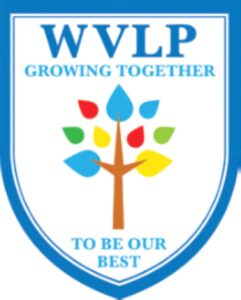
Deighton Gates Primary School
Primrose Lane Primary School
Boston Spa School
Collingham Lady Elizabeth Hastings’ CE Primary School
Lady Elizabeth Hastings’ CE VA Primary School
Thorp Arch, St Mary’s CE Primary School
Harewood CE Primary School
Bardsey Primary School
St John’s School for the Deaf
The schools in this area have a long established practice of working closely together within the Elmete Partnership of Schools & Services (EPoSS) Family of Schools. Nine of these schools (as listed above) took this collaboration further in January 2014 by setting up The Wharfe Valley Learning Partnership (WVLP). Two years we were delighted to welcome Crossley Street Primary to our partnership.
The Partnership is an Educational Trust, enabling each school to keep its unique identity and autonomy, whilst simultaneously working closely together to benefit our children, young people and communities.
Together, these popular and successful school have secure base on which to build a strong, effective partnership. The Governing Bodies of these schools believe that a Trust of this kind is the best way to ensure the long term, sustainable collaboration that is required to meet our common aims.
The WVLP seeks to develop practice across the schools to further enhance the provision and opportunities available to our children and young people, maintaining and improving their already high standards of attainment and achievement. It collaborates closely with other organisations, such as Leeds City Council services and providers of higher education and others, so that we can serve our children, young people, families and communities most effectively.
Key to the success of the Wharfe Valley Learning Partnership is our shared vision and values.
The schools in Partnership are each unique, equal and autonomous. We work together to achieve our shared vision of securing the very best outcomes for the children and young people in our schools through: setting the highest expectations for achievement; innovating in practice and organisation; and inspiring and supporting each other in continual improvement from our strong base.
This vision is underpinned by our shared values:
Furthermore the Partnership is based on the values of self-help, self-responsibility, democracy, equality, equity and solidarity. In our dealings as a Partnership we demonstrate the ethical values of honesty, openness, social responsibility and caring for others.
As a Trust, stakeholders, including children, young people, parents and staff are encouraged to have their say in how our collaboration develops. The Trust Board is made of Head teachers and Governor Representatives from each school and other Trust partners.
The schools have identified several priorities for the work of the Wharfe Valley Learning Partnership. They are as follows:
Headteachers in our partnership have grouped together to take on responsibilities in leading aspects of our development plan: development of leadership through collaboration, training, sharing of best practice and promotion and support of wellbeing; development of teaching and learning with a current focus on assessment and moderation and, importantly, the development of pupil voice in shaping the work of the partnership.
The work of the partnership is overseen and guided by the trust board which is made up of headteachers and governors from each of the schools.
To help us achieve these priorities, as well as collaborating together, we work closely with our partner organisations. Currently we have the following partner organisations:
Through collaborative working in the WVLP we are ensuing that not only do we get best value for money with training and staff development, but that children have opportunities that are wider than the sphere of their own school. That they understand their part in the community and feel able to take and active confident part in it.